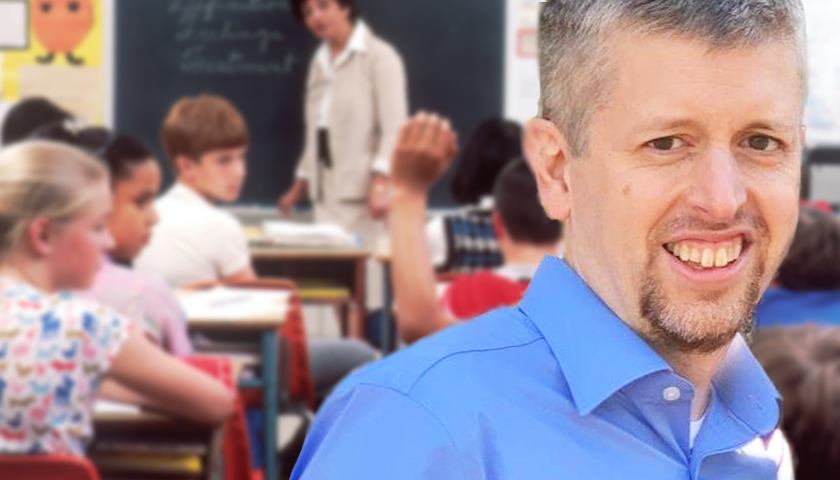by Bruce Walker
Asserting “student aid should take precedence over school aid,” a new study seeks to address among other topics the funding disparities between traditional public schools and charter school academies.
Released earlier this week, “From School Aid to Student Aid” was written by Ben DeGrow, Education Policy director at the Mackinac Center for Public Policy.
DeGrow notes the COVID-19 pandemic played a significant role in parents selecting alternatives to publicly funded schools for their children. He also says schools are recognizing the effects of declining birth rates.
Both factors, according to DeGrow, contribute to an increased need to revisit Michigan’s Proposal A, the system state voters approved in 1994 to reduce school funding discrepancies through the adoption of a student-based funding model.
However, DeGrow wrote: “Too much focus remains on funding the preservation of institutions and infrastructure that may not effectively serve today’s parents nor fulfill the mission of public education.” He recommends updating Proposal A to attach state “education dollars more directly to student needs and choices and on empowering educator flexibility to meet changing local needs.”
One major discrepancy identified by DeGrow is state funding for traditional public schools and public school academies, also known as charter schools.
“As of 2020, conventional districts, on average, took in $13,365 in revenue for each student enrolled, compared with $10,242 for charter schools,” DeGrow wrote. “The typical district spent over $11,700 per student, more than $2,000 greater than what the average charter school spent per pupil.”
DeGrow acknowledges PSAs receive a larger proportion of federal dollars per pupil than traditional public schools because PSAs teach a larger percentage of low-income students.
“Michigan’s K-12 education funding, as currently designed, creates a funding disparity,” Richfield Academy Superintendent Pamela Haldy told The Center Square in an email. “The largest disparity is seen between traditional and charter schools. While the current funding system enhances the coffers of the districts, it diminishes the funding of the charters, who receive approximately 1/3 less per pupil funding than the lowest funded traditional district.”
Haldy continued: “Although charter schools educate a small percentage of all Michigan students, they have a higher percentage of low-income students, ESL students and students in special education programs per student body than traditional districts. At-risk populations are more expensive to educate, yet we receive much less money to educate them. It is time for a transformation in K-12 funding – it is time for equity in funding that can only be achieved by funding the needs of the students and funding at-risk students at a higher rate as needed, by funding charter schools at the rate equal to that of the highest funded districts.”
PSAs were designed such that the institutions cannot raise local property taxes with which to finance school construction and infrastructure projects, DeGrow said. By comparison, traditional public-school districts were able to fund such projects with $1.9 billion in local taxes in 2020 alone.
“It continues to be fundamentally unfair to students attending a charter school that their charter school has to pay for their facilities out of their per-pupil funding, while traditional schools do not,” Dan Quisenberry told The Center Square. He’s president of the Michigan Association of Public School Academies. “That does nothing but hurt students, and as the report points out, charter schools serve a disproportionately high percentage of minority students and students living in poverty.”
DeGrow concludes the data collected from 2020 reveals traditional public-school districts received $13,365 on average for each enrolled student. PSAs, by contrast, received only $10,242 per student on average. Taking into account a significant portion of Michigan taxpayer dollars are dedicated as categorical dollars to fulfill traditional public schools’ pension obligations, DeGrow said PSAs only receive 5% of the state’s categorical dollars. This while PSAs educated 10% of the state’s public-school students.
“Since the typical conventional district’s real per-student revenues accelerated beyond 2010 levels in recent years, charters are financially further behind districts than they were a decade earlier,” DeGrow wrote.
Quisenberry agrees with DeGrow’s analysis.
“This report accurately points out the continuing disparity that still exists between charter public schools and traditional public schools, and the ways in which charter school students continue to be valued less,” Quisenberry said. “While we’ve made strides in recent years, including the closing of the per-pupil funding gap, we still have a long way to go.”
– – –
Bruce Walker is a regional editor at The Center Square. He previously worked as editor at the Mackinac Center for Public Policy’s MichiganScience magazine and The Heartland Institute’s InfoTech & Telecom News.
Photo “Ben DeGrow” by Ben DeGrow.





